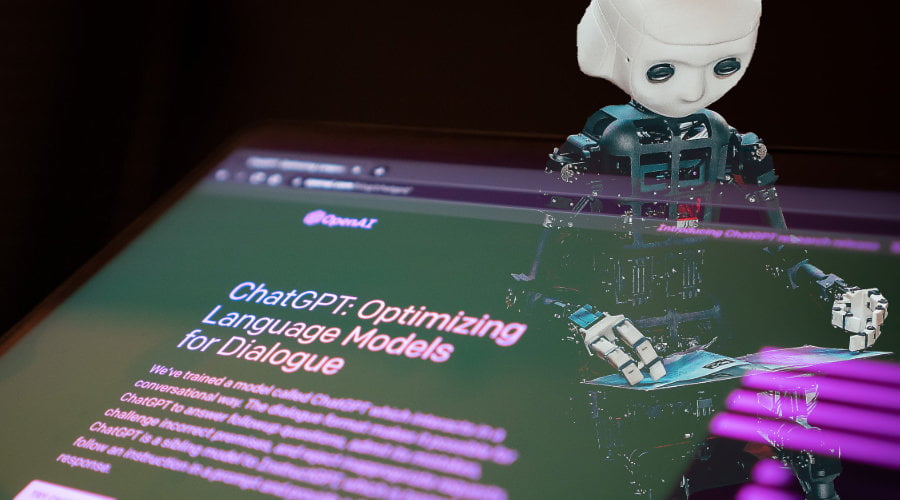
OpenAI is quickly becoming the go-to platform for businesses looking to train custom GPT-3 models you can use in many ways. This technology is useful specifically for marketing agencies, entrepreneurs, developers, and data scientists.
But what exactly are OpenAI and GPT-3? And how do you use them? Let’s see how to train custom OpenAI models to benefit your business and what’s the best OpenAI model training no-code platform.
What Are OpenAI and GPT-3
OpenAI and GPT-3 (Generative Pre-trained Transformer 3) are cutting-edge AI technologies applied in automation and industry processes. OpenAI was founded in 2015 by Elon Musk, Sam Altman, Reid Hoffman, Jessica Livingston, , Ilya Sutskever, Peter Thiel and others to research artificial intelligence technologies and create predictive models that can solve complex problems.
OpenAI’s custom GPT3 model uses a transformers approach that tries to predict the outcome of text or language tasks, aiming to replicate human-level behaviour. It has already been adopted in many industries, such as marketing and web development. OpenAI also offers a Custom OpenAI Model that uses innovative systems integration to produce an AI system tailored to specific applications such as natural language processing, image recognition, autonomous systems, and more.
With OpenAI and GPT-3, the possibilities for industry automation seem limitless; OpenAI is quickly becoming an essential partner in achieving higher levels of efficiency for businesses around the world.
Custom OpenAI Model Training Benefits
Custom OpenAI model training has numerous benefits for businesses. These models are highly accurate since they are specifically designed for each application.
Additionally, training these models requires less time and effort than traditional AI methods since many processes are automated.
Finally, with OpenAI’s algorithms, businesses can customise their solutions according to their needs.
How To Train Custom OpenAi Models

1. Familiarise Yourself With the Basics
Before training your OpenAI model, you must learn the basics of AI and ML. This means understanding how machine learning algorithms work, what types of AI models are available, and how they can be used in different scenarios – all of which are essential for anyone looking to get started with training their OpenAI model.
2. Pick an Appropriate Model for Your Needs
Different models have different capabilities, strengths, and weaknesses. Therefore, before making your selection, it’s critical to check the accuracy rate, speed, scalability, etc. But if you want to increase accuracy and reliability, the best way is to train your custom OpenAI model. So, keep reading through the following steps.
3. Define The Model Type
The first step in training custom OpenAI models is to define what type of model you want to create. That means identifying the industry and application. For example, when designing an image recognition model, you will need different kinds of data than if you were creating a natural language processing model.
4. Create the Right Data Sets
Once you have identified the model type, the next step is gathering all the necessary data to train the model. Data sets are essential inputs when training an OpenAI model as they allow the algorithm to learn from real-world examples and apply this knowledge in the future. This includes structured and unstructured data such as text, images, videos or audio you can use to train the model. But not all of this data will be used to train the model – only relevant data should be included to increase accuracy.
Additionally, you must label all data correctly to allow the model to process it accurately. As such, you need data sets that reflect your goals. This way, the model knows what type of information should be extracted from them. For example, if you’re looking for insights about customer behaviour, you would want data sets related to customer demographics or purchasing habits rather than traffic patterns or weather conditions.
In this step, take care you pre-process/clean your data sets by removing any unnecessary or irrelevant data points. This could include anything from deleting rows with missing values to normalising numerical values or converting text to numerical values if necessary. Pre-processing your data will ensure that your model is trained on clean data sets and, as a result, will perform better.
5. Train Your Model
Once your data set is ready for OpenAI, you can begin training your model using supervised or unsupervised learning techniques depending on your specific needs. Supervised learning involves feeding labelled examples into a neural network that can learn how to classify new inputs accurately.
Conversely, unsupervised learning relies on pattern recognition algorithms to detect patterns in unlabeled data sets without human intervention. The method you choose will depend on the type of problem you are trying to solve with your model.
6. Use Your Custom OpenAI Model
Once your model has been trained, it will reside on the OpenAI server/cloud platform. From there, you can use it by connecting the related API Key to your application/software (chatbot, autoresponder, content creation, lead generation, etc.). In this stage, you can check the model performance and eventually edit and train it again to improve the results.
7. Use an OpenAI Model Training Platform
You can train custom OpenAI models by yourself, doing all the steps above singularly and using different resources, websites, and technical skills. Alternatively, a user-friendly no-code OpenAI model training platform, such as AI4Leads, can save your day by doing most of the hard work for you.
AI4Leads is a vertical project by WebRobot Ltd offering AI-based automated tools for user-generated data scraping from multiple sources (social media, websites, public APIs, etc.), lead generation, custom OpenAI model training, and custom chatbot design consulting.
An accessible OpenAI model training platform must be flexible and affordable, offer a tool that doesn’t require coding knowledge and allows you to do all the steps in one environment. For instance, AI4Leads uses a simple dashboard powered by high-performance cloud computing, web scraping service, automation and big-data technology.
In particular, the AI4Leads custom OpenAI model training service allows you to
- select your industry;
- upload data content in multiple knowledge base formats such as text, PDF, or URLs from which the underlying data extraction engine can collect relevant data;
- automatically create Q&A-format data sets you can download, check, edit at your convenience, and use for training;.
- start the model training with one click by inserting your OpenAI API key that allows AI4Leads to use the OpenAI backend (with all the necessary coding);
- check your custom model list;
- use your trained OpenAI model by integrating the related API Key with any compatible third-party tool you are using (chatbot, lead generation, email autoresponder, etc.);
- check your model’s performance in real-time and edit it by refining the training (upload and create additional data sets and train the model again).

What’s Next
AI4Leads is preparing the first release of the platform with a hassle-free wizard for conversation model training.






[…] a machine learning (ML) dataset is essential in training an Artificial Intelligence (AI) model. It requires data to be collected, labelled and organised into ML-ready sets. Web scraping gives […]
[…] and Machine Learning: Use collected data to train machine learning models and improve algorithm […]
[…] in its predictions. Furthermore, big-data scraping can help reduce the manual labour required to train a GPT-4 model, allowing it to learn faster and produce better results in less […]